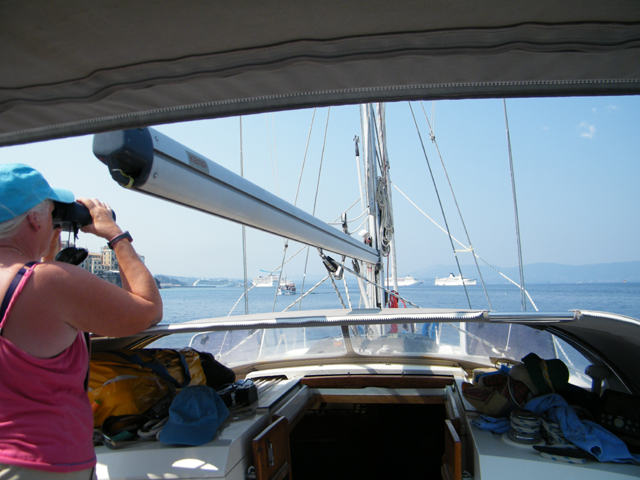
Go to ...
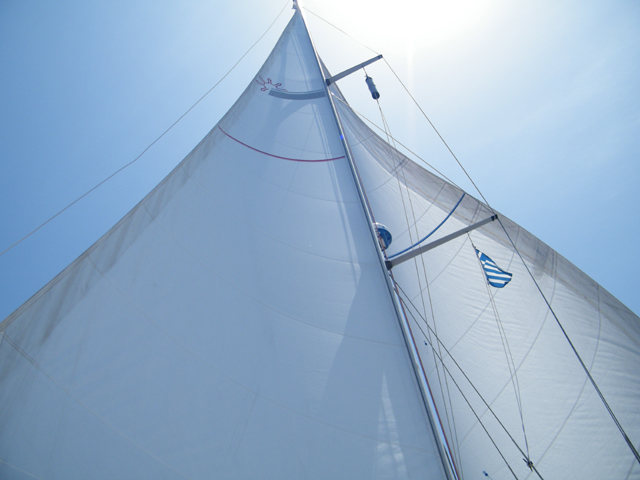
|
Moving and sittingPage 1 - Moving(>> page 2 - Sitting)
The places we've been and the things we've seen...
Top of page | Go back | Home |
Google Ads, everyone has them but they'll bring us a few pennies if you click on one, thanks.
|

|
||
Our navigation solutions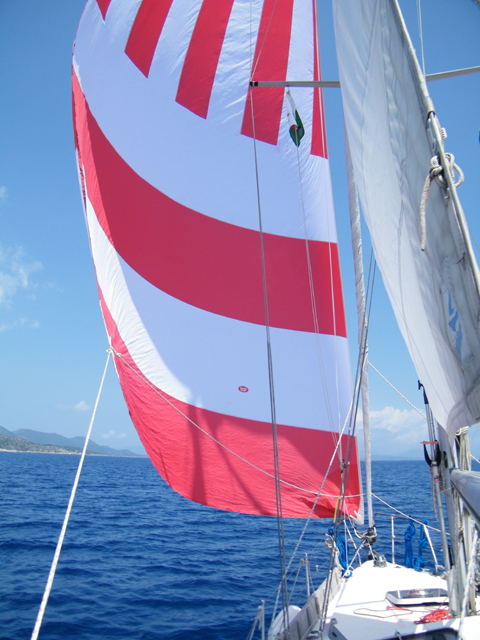
We have a fixed navigation solution comprising a Garmin 152 GPS feeding an old Dell 420 laptop which runs CMAP charts on openCPN, this served us for many years but the shortfalls in the CMAP charts are pretty apparent when you look at the more modern solution. The laptop is deliberately old because old computers required less Amps (not quite so true any more) and the OpenCPN program is not only free but also integrates an AIS signal from a NASA Marine 'engine'. ♥♥♥♥♥ Top of page | Go back | HomeLanding and take-off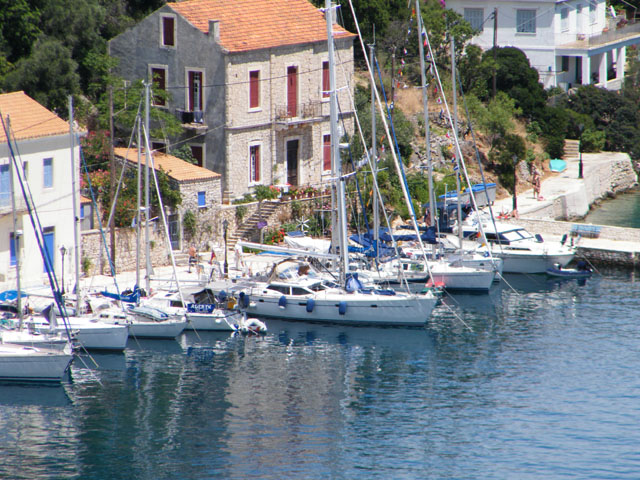
Like everyone else we've refined the arts of landing and take-off. Landing is a case of taking plenty of room and time to line up with the chosen slot between boats already moored. We have PMR radios so that whoever is on the bow can talk to the helmsman without shouting. We always have the ropes and fenders sorted before we even line up, after that it's a case of working out where to drop the anchor and manoeuvring the boat to the right place then dropping it in and letting it run. This sounds easy but the judgement about where to drop the anchor requires a good eye (we have a finite amount of rode) and the ability to work out where everyone else's anchors are so that we can miss them all. Once the anchor has been dropped it's a case of lining the boat up and heading slowly for the quayside. Bows-to this is easy and this was always our preferred orientation but this year we've been experimenting going in stern-to which, in a boat whose rudder is not designed for med' style mooring and with a large windage from the deck saloon, has resulted in many aborted attempts. The advantage is better holding with the bow anchor and easy recovery of the anchor.
Top of page | Go back | HomeDinghy
A dinghy is another essential for us and ours is either towed or carried on the stern davits. At anchor it takes us to the shore either for shopping, exploring or taking a line to the nearest tree to hold the stern. We have a 3.2 HP outboard for when we're lazy which lives on a bracket low down on Aderyn Glas's stern from where it's easy to lift onto the dinghy.♥♥♥♥♥ Cruising chute and other sails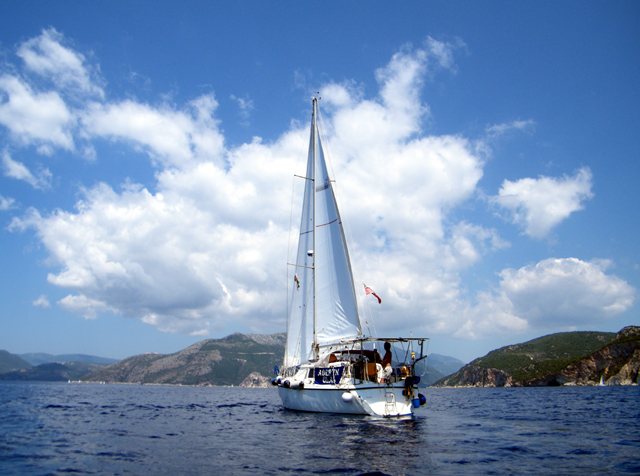
We had a cruising chute but so rarely bothered to use it that we've now sold it. In fact if the wind is somewhere aft of the mast the Genoa is often the only sail we deploy. ♥♥♥♥♥ Like the Genoa the main is also on a roller reef but it doesn't add much power, it's more useful for balancing than driving. But that's just the Eclipse outfit and you can't sensibly not have a mainsail. ♥♥♥♥♥ (>> page 2 - Sitting)Top of page | Go back | Home |
||


